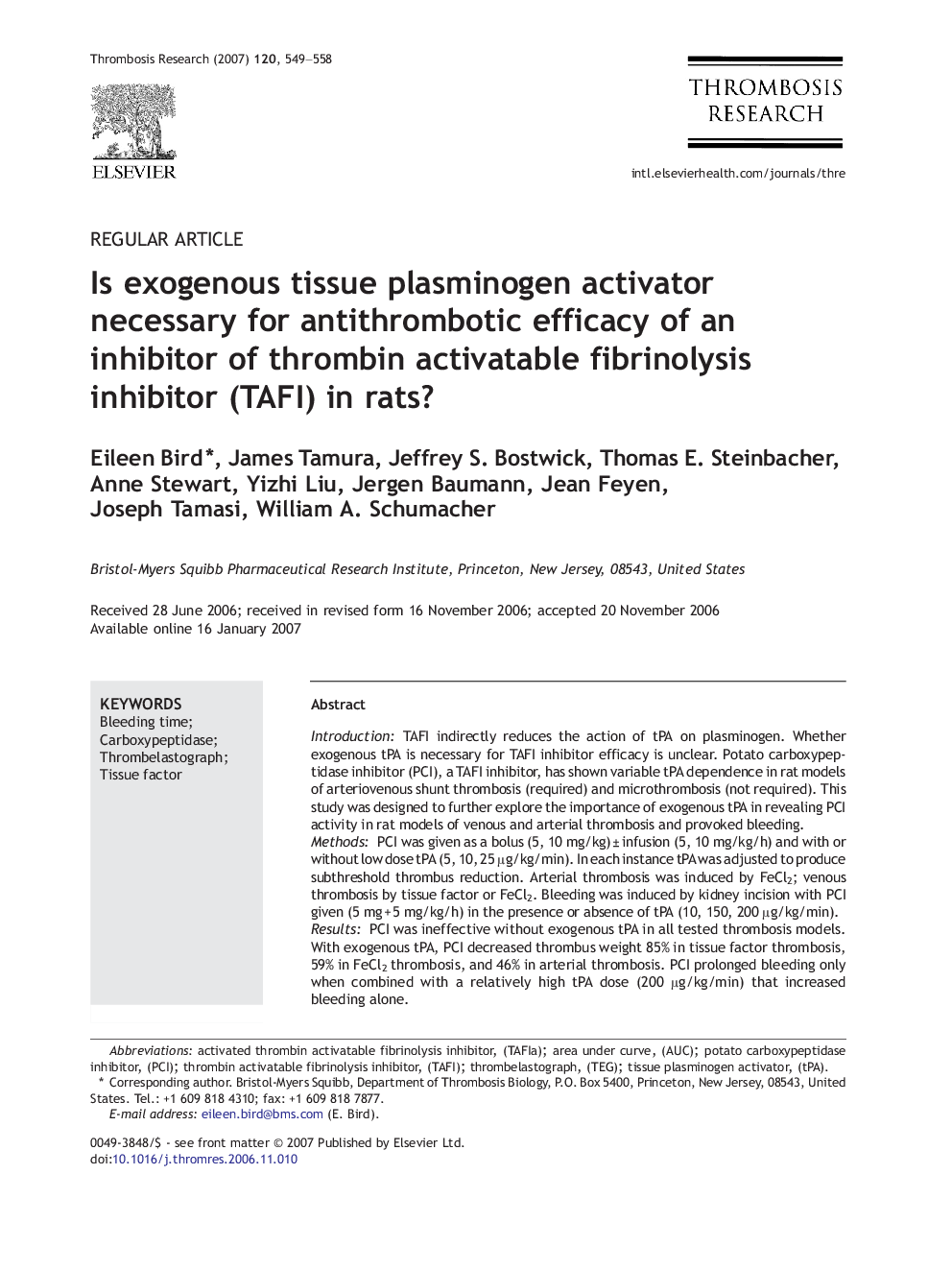| Article ID | Journal | Published Year | Pages | File Type |
|---|---|---|---|---|
| 3030009 | Thrombosis Research | 2007 | 10 Pages |
IntroductionTAFI indirectly reduces the action of tPA on plasminogen. Whether exogenous tPA is necessary for TAFI inhibitor efficacy is unclear. Potato carboxypeptidase inhibitor (PCI), a TAFI inhibitor, has shown variable tPA dependence in rat models of arteriovenous shunt thrombosis (required) and microthrombosis (not required). This study was designed to further explore the importance of exogenous tPA in revealing PCI activity in rat models of venous and arterial thrombosis and provoked bleeding.MethodsPCI was given as a bolus (5, 10 mg/kg) ± infusion (5, 10 mg/kg/h) and with or without low dose tPA (5, 10, 25 μg/kg/min). In each instance tPA was adjusted to produce subthreshold thrombus reduction. Arterial thrombosis was induced by FeCl2; venous thrombosis by tissue factor or FeCl2. Bleeding was induced by kidney incision with PCI given (5 mg + 5 mg/kg/h) in the presence or absence of tPA (10, 150, 200 μg/kg/min).ResultsPCI was ineffective without exogenous tPA in all tested thrombosis models. With exogenous tPA, PCI decreased thrombus weight 85% in tissue factor thrombosis, 59% in FeCl2 thrombosis, and 46% in arterial thrombosis. PCI prolonged bleeding only when combined with a relatively high tPA dose (200 μg/kg/min) that increased bleeding alone.ConclusionsIf the current results predict clinical efficacy, the need for exogenous tPA in combination with TAFI inhibition is a potential problem. However, in acute settings where intravenous fibrinolytics are administered, or indications in which tPA production increases, TAFI inhibitors may prove to be safe and moderately effective profibrinolytic agents.
